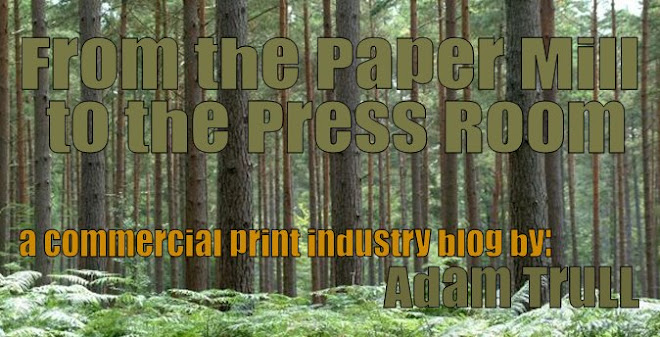After having a recent in-depth discussion on screening, I thought that I’d share the two types of Acme’s screening capabilities:
AM Screening
-Definition: AM screening, or Amplitude Modulation screening, is the conventional screening seen most often in commercial offset printing. In AM screening, the dot pattern is a repeating floret pattern. Tone-density change is seen by amplifying or reducing the size of the dot. Standard AM screening at Acme is 175 LPI (or lines per inch).
-Some of the major benefits are:
1.) Easiest screening type to make color moves on press.
2.) Smoother tones than FM screening.
-Some of the major disadvantages are:
1.) Unwanted patterns and effects (e.g. moiré patterns) are more likely.
2.) Difficulty truly representing very low densities (it will look flat).
-Some of the uses:
1.) Projects that require control of color on press (i.e. typically any product-focused or corporate-focused projects)
FM Screening
-Definition: FM screening, or Frequency Modulation screening, is also referred to as stochastic screening. This screening utilizes one very small dot size (20 microns), in a randomized pattern, with frequency of the dot to create tone-density change (i.e.: the less number of dots, the lighter the density). At Acme, we utilize staccato screening, which uses two a 20 micron dot in the low and high densities and a 25 micron dot in the mid densities, thus allowing for a much smoother mid density range.
-Some of the major benefits are:
1.) Able to capture much greater details.
2.) Very vibrant color.
3.) Reduced moiré dot patterns.
4.) Dot patterning is more similar to Epson proofs than AM Screening (though, the dot shape differs)
-Some of the major disadvantages are:
1.) Get ready…this is THE biggest reason why you might not want to consider FM screening: it is very difficult to make color moves on press.
2.) Clustering due to randomization of dots.
-Some of the uses:
1.) Projects requiring vibrant colors (e.g. outdoor photography, etc.)
2.) Projects with very fine detail.
3.) Projects with objects that have a tendency to moiré.
4.) Projects with objects that have very low densities (e.g. glass/crystal-ware, etc.)
Every project has different requirements, so it’s best to have your favorite print rep (me....if I’m not your favorite, I’ll still help you out!), consult with you prior, to understand the benefits and disadvantages that it will have on your project!

